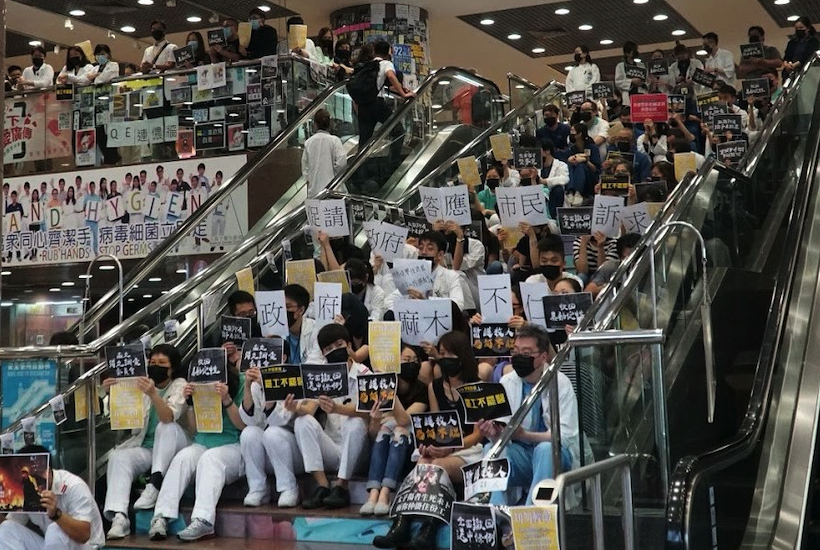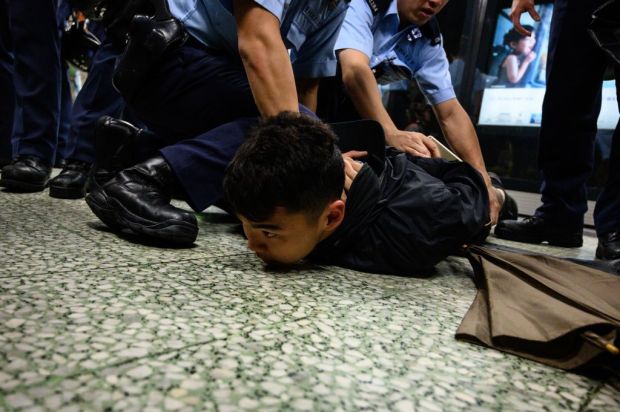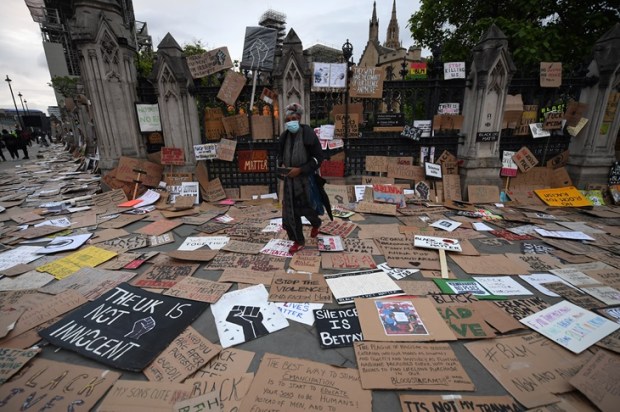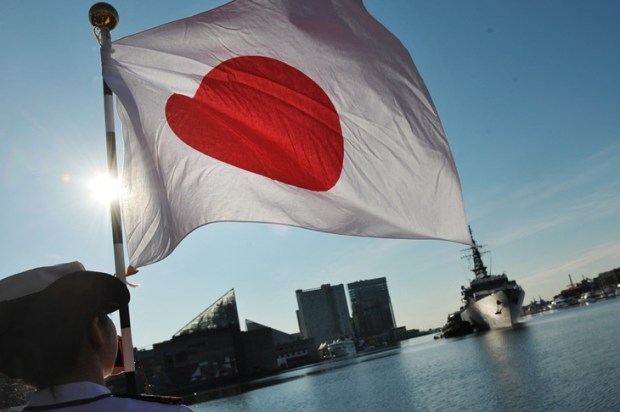Hundreds of medical personnel from three hospitals across Hong Kong have staged sit-ins this week in resistance to the excessive violence used by police when responding to protests.
The savagery dished out by police was compared to that dished out by the triads in their infamous attack on passengers and protesters in Yuen Long train station.
At Queen Mary Hospital, healthcare staff formed a human chain protesting the refusal of police to allow first aid for people wounded by officers in the Prince Edward train station, which was the scene of a brutal crackdown on protesters two days earlier. It is not the first time that police have delayed medical treatment for protesters – in August over 1000 healthcare staff from 13 hospitals staged a sit-in to protest excessive use of force, with many holding signs accusing police of trying to kill protestors.
A heart-wrenching video showing a volunteer medic begging to be allowed to treat the wounded went viral as a symbol of the callous indifference of the police to public health.
At Monday’s protest, Queen Elizabeth Hospital staff blocked the main stairway for two hours with hospital security personnel placing cordons to direct members of the public elsewhere. Healthcare staff wore surgical masks and shielded their faces with protest signs to prevent being identified in photos and intermittently chanted “stand with Hong Kong.”
Our presence as the only Westerners recording the event at the time did not go unnoticed. Shortly after our arrival we were approached and questioned by a man who appeared to be directing security about our identity and reasons for being in Hong Kong. Our answers appeared to satisfy him, although he didn’t stray far from us and we left soon after.
The growing resistance within the medical community is a sign of how bad things have become. With the winter flu season approaching, and with bed occupancy rates passing 100 per cent at 14 hospitals last season and multiple deaths recorded, Hong Kong’s doctors and nurses cannot afford to have the police adding wounded protesters to the patient list.
With numerous videos now circulating which show the police surrounding and beating fallen protesters with batons, what little trust was left in local law enforcement is quickly evaporating.
Monday was the first day of the new school year, a landmark that some expected would bring a reduction in protests. Those expectations were misplaced however, as thousands of students protested in the streets and public areas. In Edinburgh Place, hundreds rallied to hear speeches. In what has become commonplace at similar events, attendees distributed free food and water to others who came and demonstrated techniques for self-protection.

It was truly humbling to watch these students display such compassion, humility and respect while living in an atmosphere of oppression and government-endorsed violence. These children, many driven there by their parents, have more strength of character than can be found in those who run their country. It was saddening to watch this quiet assembly suddenly roar in anger as an armoured police van pulled up next to the crowd, and heartening to hear their cheers when it beat a hasty retreat.
As the protest movement spreads to encompass all ages and backgrounds it is becoming more and more evident that something will give sooner rather than later. Hong Kong Chief Executive Carrie Lam is not budging, nor are the police, and the people of this city are only growing in their conviction. Meanwhile, Beijing waits patiently, the 70th anniversary of the Peoples’ Republic of China on October 1 is a celebration they will not want overshadowed by a military crackdown in Hong Kong.
After the celebrations have died down and the news cycle has moved on, it may be another story.
Eliot Metherell works for the Australian Taxpayers’ Alliance.
Photos: Eliot Metherell.
Got something to add? Join the discussion and comment below.
Got something to add? Join the discussion and comment below.
Get 10 issues for just $10
Subscribe to The Spectator Australia today for the next 10 magazine issues, plus full online access, for just $10.


























Comments
Don't miss out
Join the conversation with other Spectator Australia readers. Subscribe to leave a comment.
SUBSCRIBEAlready a subscriber? Log in